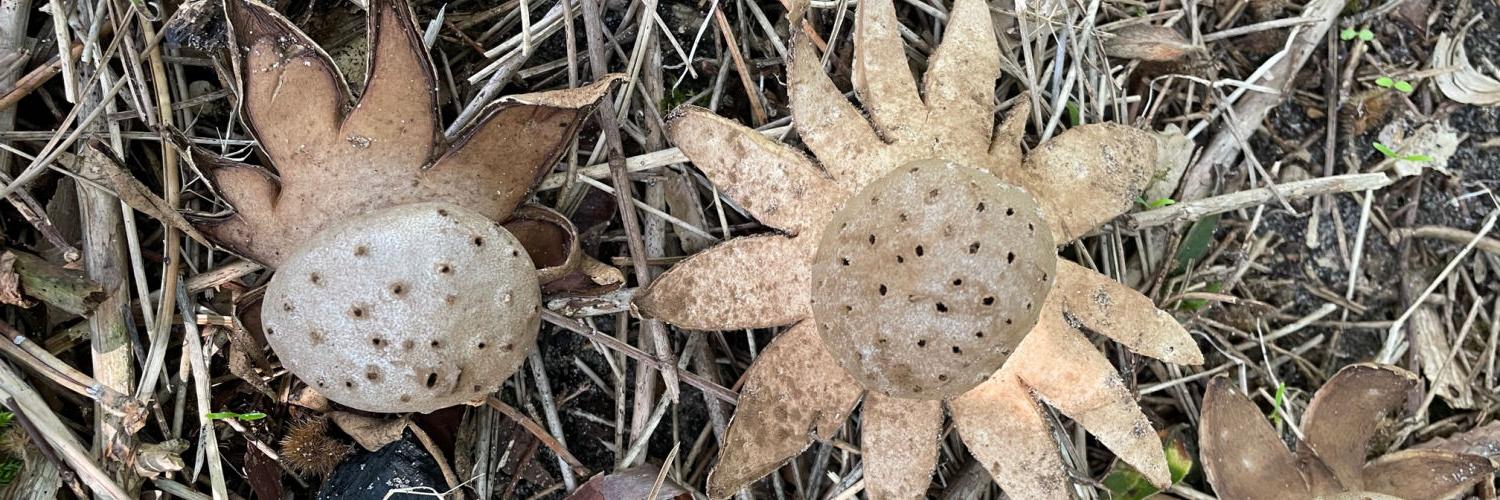
Dr Linda Davies, Fungal Education and Outreach Committee, British Mycological Society
Fungi are not plants and not animals. They are a kingdom of their own, and a huge kingdom of some 3-5 million species, although only about 140,000 have been described to date. They are essential to life on earth, and without them our terrestrial ecosystems would not function. Despite their crucial roles in our ecosystems, fungi are mentioned just once in the Cambridge OCR Natural History consultation - it would be great to see fungi included in the proposed GCSE in Natural History qualification.
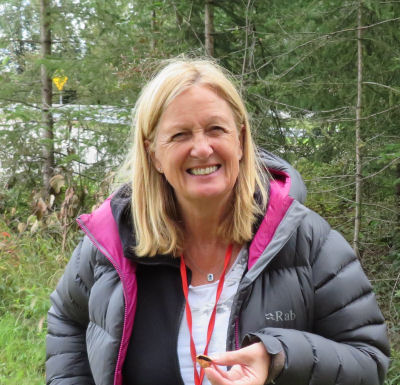
The third kingdom
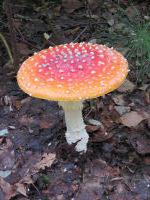
The omission of fungi from the Cambridge OCR's early consultation findings is, perhaps, not surprising because the ecological significance of fungi has only really begun to be understood and appreciated in recent decades. The ephemeral nature of most macrofungi - the fruitbodies, or mushrooms - together with their predominantly hidden, largely microscopic structure (the mycelium) - and an inherent fear of their toxicity - has meant that interest in fungi has been bypassed in favour of what are conceived to be more charismatic and accessible species of plants and animals. Yet the largest organism on earth, confirmed by genetic sampling of its underground mycelium, is a honey fungus, a species of Armillaria, growing in the Malheur National Forest, Oregon, and covering almost 10 square kilometers.
This year, the International Union for the Conservation of Nature (IUCN) has called on all nations to recognise fungi as equally important as plants and animals. They state that fungi are as critical to protecting and conserving life on earth and should be referenced as Funga alongside the other main kingdoms of Fauna and Flora.
Relationships with fungi
Fungi evolved from water to land based organisms around one billion years ago and played a crucial role in supporting plants to make this transition and establish and diversify on land. Still today, most plants depend on fungi for their survival, 90% of plants having mutualistic associations (mycorrhizas) between their roots and fungi, the latter supplying the plant with water and nutrients. Unlike plants, but like animals, fungi are unable to produce their own food. They obtain their food via these mutualistic relationships with living plants and animals, from dead tissues and in some cases from living tissues as parasites and pathogens. While the role of fungi as decomposers is well established, a tsunami of recent research has provided evidence and greater understanding of the ‘wood wide web’: the underground connectedness of delicate hyphae, forming mycorrhizal relationships with plants in all natural habitats, from grasslands to forests.
Many invertebrates (and vertebrates such as squirrels) feed on highly nutritious fungal mycelium, and some (e.g., termites and leaf-cutter ants) have evolved intimate relationships whereby they farm fungi. Wood-decaying fungi create habitats for numerous species of vertebrates. Some fungi can cause harm. A fascinating example is an insect-killing species that feeds on an ant’s internal tissues, and produces chemicals that alter the ant’s behaviour, earning them the name ‘zombie-ant fungi’. The ants are driven to climb to the tops of plants, where they die, scattering fungal spores into the atmosphere, thus favouring survival of the fungus.
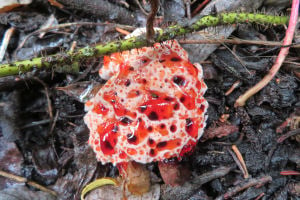
Plant pathogenic fungi are of considerable concern to humans because they can cause huge crop losses - for example, potato blight - and significant changes to our landscape, such as that caused by ash dieback disease. Many of these problems are a result of our own activities, and due to the ways in which we grow our crops or move seeds and plants around the world.
In relation to environmental change, fungi are key decomposers of complex organic matter, unlocking chemical nutrients (carbon, nitrogen, potassium and sulphur) that are released, or shared with other groups of organisms. Understanding the relationship between fungi and the environment is a key part of understanding global carbon-cycles and climate change.
Identification and cataloging
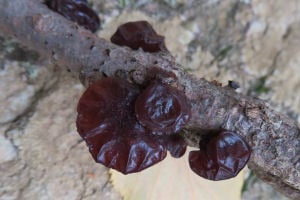 The Kew Herbarium houses the largest collection of dried fungi in the world with records going back to the 18th Century, including specimens collected by Charles Darwin. Fungi provide a rich and fascinating foundation for the study of taxonomy, with dried specimens, photographic images and literature widely available to teachers and students, and an increasing wealth of information now referenced, digitised and available online and in herbaria worldwide. Our knowledge of the diversity and distribution of fungi has been accelerated in recent years due to the application of molecular genetic techniques.
The Kew Herbarium houses the largest collection of dried fungi in the world with records going back to the 18th Century, including specimens collected by Charles Darwin. Fungi provide a rich and fascinating foundation for the study of taxonomy, with dried specimens, photographic images and literature widely available to teachers and students, and an increasing wealth of information now referenced, digitised and available online and in herbaria worldwide. Our knowledge of the diversity and distribution of fungi has been accelerated in recent years due to the application of molecular genetic techniques.
Fungi are found everywhere from the most extreme environments to inner cities. They have developed tactics that allow them to inhabit the freezing conditions of the arctic and the heat of the jungle. Their strategies for sustenance and survival are complex, often precarious and frequently rather amazing.
During the autumn, many of the macrofungi send their fruitbodies above ground displaying a variety of shapes, sizes, scents and colours for study. Other fungi such as lichen are visible throughout the year. Collecting large quantities of fungi is not encouraged, but through field observation, photography, sketching and field notes, students can begin to understand the features that separate one fungus from another. Ecology plays an important role in species identification so a broader knowledge of habitats, soil types, tree and plant hosts and other local features will contribute to an understanding of why species grow in particular places and why habitats - not just species - need protection.
Fungi as food, materials, medicine and more
For hands-on experience, edible fungi can be grown from spore kits using a wide range of nutrient-rich materials from paperback books to coffee grinds. Home grow kits produce fungi in a few weeks and demonstrate just how efficient fungi are at recycling. The less palatable mycelium can be grown commercially to produce a wide range of products and eco-services that include plastic degradation, biodegradable packaging and ‘natural’ beauty products. Leading fashion houses like Stella McCartney and Adidas, are investing in fungus-based fabrics that are biodegradable and meet the aspirations of consumers to act sustainably. Mycoremediation is the process of harnessing fungi’s natural abilities to break down materials for a beneficial effect; as an example, Waitrose has recently funded a project on fungi that digest plastic waste.
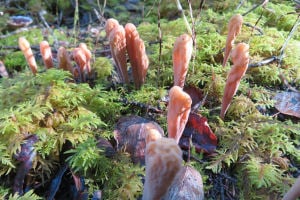
The value of nature in providing remedies for human ailments has long been appreciated with many of our most important pharmaceuticals derived from plants, animals and fungi. Fleming’s discovery of the antibiotic properties of penicillin is perhaps most widely appreciated but it is just one of a range of treatments, derived from fungi, from cholesterol-lowering statins to immunosuppressants. Clinical trials using psilocybin from ‘magic mushrooms’ are showing early positive results for mental health. Fungi are also important in the food industry, for example, in the production of cheese, soft drinks, bread and not least wine. There is little doubt that as we identify and study new fungi, we will discover innovative solutions to further protect and improve human well-being.
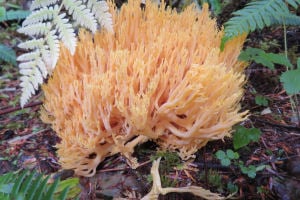 The British Mycological Society (BMS) is just one of many natural history societies in the UK where expertise is concentrated, where professionals, volunteers and enthusiasts meet to share knowledge and skills and where newcomers can find inspiration, guidance, support and resources. The BMS recognises the importance of a GCSE in Natural History and would welcome the opportunity to become involved in its development and delivery.
The British Mycological Society (BMS) is just one of many natural history societies in the UK where expertise is concentrated, where professionals, volunteers and enthusiasts meet to share knowledge and skills and where newcomers can find inspiration, guidance, support and resources. The BMS recognises the importance of a GCSE in Natural History and would welcome the opportunity to become involved in its development and delivery.
Dr Linda Davies
Dr Linda Davies chairs the Fungal Education and Outreach Committee of the British Mycological Society. She is an Honorary Research Fellow in Urban Ecology at the Centre for Environmental Policy at Imperial College London. She designed and directed the citizen science programme, Open Air Laboratories (OPAL), a £15m partnership of 15 institutions, that together delivered a science and policy-driven agenda for outdoor learning.
Keep up to date with our proposed GCSE in Natural History and other Cambridge OCR Natural History news by signing up our email newsletter and updates. You can read back issues of our Natural History newsletter here.
